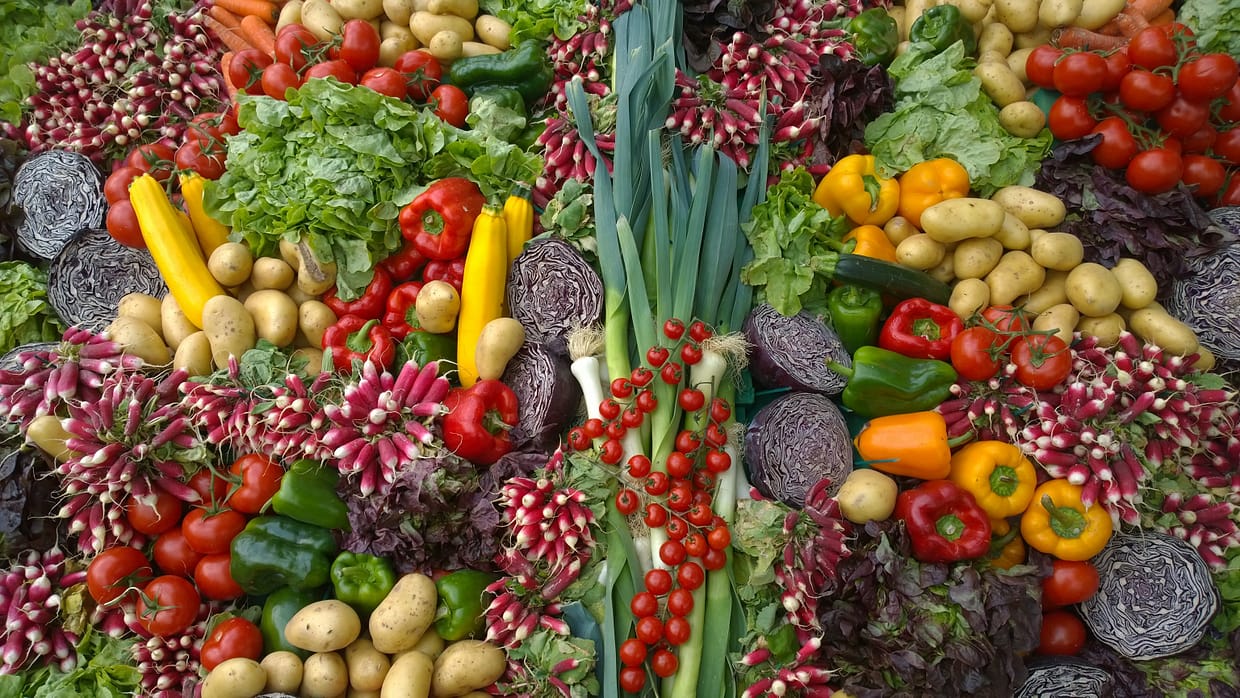8 FOODS TO SUPPORT YOUR LUNGS | stedtnitz. design your life

In the midst of this totum revolutum in which we are immersed, and despite the overflow of information we’re receiving (“Do this, stop doing that, avoid this, you must do that…”), I still feel called to share this information in case it’s useful to you—how to give our lungs “a break” and to nourish them in the way they need, which is now more important than ever.
The lungs (those crucial organs that keep us connected to life), seem to be the most affected by the coronavirus. For this reason, it is well worth looking at the possibilities we have to protect and strengthen them.
Several factors affect lung health: physical activity, genetics, environment, habits (more or less healthy), etc. Among the latter, our daily diet has a lot to say about reducing inflammation and improving lung function.
8 FOODS TO SUPPORT YOUR LUNGS
In addition to providing a long list of vitamins, minerals and antioxidants (all of which are needed to strengthen the immune system), the following foods have been studied for their ability to promote lung health and protect against a variety of respiratory conditions.
1) Apples

Photo by Chandra Oh on Unsplash
The old English adage “an apple a day keeps the doctor away” applies perfectly here.
A study published in The European Respiratory Journal showed that apples could slow down lung function decline over a 10-year period, especially among ex-smokers.
Another study suggested that a number of substances found in apples, known as phytochemicals, help to decrease oxidative stress and inflammation, which may promote good lung function.
2) Bananas

Photo by Lucian Alexe on Unsplash
Rich in potassium, fiber and vitamin C, bananas can be especially beneficial to lung health.
How, exactly?
Some studies show that the potassium contained in bananas can promote the contraction and expansion of the lungs, thus avoiding certain respiratory problems.
Other research studies seem to indicate that bananas may preserve lung function, and may even be associated with a lower risk of typical symptoms of childhood asthma.
3) Leafy greens

Photo by Louis Hansel @shotsoflouis on Unsplash
Here, I refer to dark green vegetables such as spinach, arugula, lamb’s lettuce, kale, broccoli, Swiss chard…
These leaf-shaped goodies are a gift from nature loaded with essential nutrients: antioxidants (our “weapons” to fight the havoc of stress and inflammation in our body), fiber, minerals and vitamins.
Several studies correlate the consumption of green vegetables with a lower risk of incidence of lung cancer, asthma in adults, and chronic obstructive pulmonary disease (COPD). Here you have a study published in “Nutrition and Cancer.”
4) Blue fish

Micheile Henderon on Unsplash
Certainly, one of the best “lung cleaners” because of its high levels of OMEGA 3 ACIDS.
NOTE: I’ll leave the topic of heavy metals—which some of you may have as a counterargument—for another day 😉.
The anti-inflammatory properties of this food group are beyond doubt. Their role in cardiovascular and brain health, their protective function against Alzheimer’s and other degenerative diseases of the nervous system… all of them are being widely studied by the scientific community.
Turning to our lungs, some studies indicate that omega-3 fatty acids can promote lung circulation and be beneficial for various lung conditions.
Another study, conducted at the Centre for Research in Environmental Epidemiology in Barcelona, even found that consumption of higher amounts of omega-3 fatty acids was associated with lower inflammation markers in those with Chronic Obstructive Pulmonary Disease (COPD).
What fish am I referring to? The small and medium sized ones
Mackerel, sardines, anchovies, herrings, frigate tuna, wild salmon…
Tuna and swordfish officially belong to this category; however, I do not include them here because they are too big and, as a consequence, accumulate higher loads of heavy metals.
For algae lovers: Spirulina, chlorella… they are also great sources of omega-3 😊.
5) Garlic

Photo by Mike Kenneally on Unsplash
Garlic and its antimicrobial properties have been well known for millennia.
In addition to this, it is a powerful anti-inflammatory and antioxidant, not only for the lungs but in general for our entire immune system. This article shows some of its therapeutic properties.
This kitchen staple does much more than enhancing the taste of our dishes.
However, it is recommended to consume them raw in order to obtain the therapeutic benefits:
- In salads
- Cut in 2-3 chunks and eaten directly. We need to bite the chunks just a few times to release the active components, e.g., allicin (some are clenching their jaws and rolling their eyes, I know 😉)
- Extra virgin olive oil infused with garlic cloves cut into big chunks
- Garlic tinctures
6) Green tea

Photo by Elton Sipp on Unsplash
Green tea is packed with antioxidants and polyphenols that can be beneficial to lung function, including Epigallocatechin Gallate (EGCG) (don’t let the name get you out of breath 😉).
It is a powerful antioxidant, with a potential ability to suppress the growth of lung cancer cells (as in vitro studies have shown). Here is an article from the journal “Carcinogenesis“ in case you’d like to learn more.
Green tea also contains Theophylline, a powerful bronchodilator (i.e., it expands the bronchi) that is used in medicine to treat asthma symptoms, bronchitis, emphysema, and other respiratory problems since it alleviates breathing difficulties (but it doesn’t cure them).
Other studies indicate that regular consumption of green tea may be related to a lower risk of chronic obstructive pulmonary disease (COPD), a group of lung diseases that can cause shortness of breath, wheezing, coughing, excess mucus, etc.
7) Ginger

pixabay
There are rivers of ink written about ginger these days, so I’m not going to elaborate here. I just want to point out that it’s a root widely used as a spice and for its medicinal properties.
With regard to lung health, this clinical trial carried out on animals showed that the use of ginger was effective in reducing lung damage and protecting against inflammation of the respiratory tract.
Another study showed that ginger extract prevented cell and DNA damage caused by alcohol (yes, yes, yes, excess alcohol and compromised lungs are closely related).
8) Turmeric

FOODISM360 on Unsplash
Another food in the spotlight lately. This spice, coming from India and of an intense yellow color that threatens not to leave your clothes nor your fingertips, is a powerful ally on our plate due to its anti-inflammatory properties.
Curcumin is the active component of this spice, and the one that gives it both its intense color and its effects on health.
Preliminary research suggests that turmeric’s anti-inflammatory properties may help in the treatment of various respiratory conditions, including asthma, COPD, acute respiratory distress syndrome, lung injury, and pulmonary fibrosis.
Note: We hardly absorb curcumin in our intestines; most of it is excreted in the stools. In order to increase the bioavailability in our body, it is recommended to take it together with a pinch of black pepper. This has an active component called piperine that helps “transport” turmeric through the intestinal walls.
Are these the only foods that help support our lungs?
Certainly not.
However, I decided to discuss these because we can easily find them these days…
Is that all that is needed?
No.
It is equally important that we remove from our plates any foods that interfere with lung health.
Here you have a very short list (I will talk about these foods in another post):
- Highly processed foods
- Unhealthy fats and refined vegetable oils
- Fried foods
- Processed meats (sausages, meatballs, cold cuts…)
- Sweetened drinks and carbonated drinks
- Added sugars
It is widely accepted that these types of food promote inflammation by increasing the production of harmful free radicals (against which our immune system has to fight).
In addition, they significantly contribute to the perpetuation of stress and anxiety, something that, unfortunately, is more present than ever these days. I talked about that in this post.
On the other hand, and as obvious as it may seem, we must remember that our plate is only one piece of the puzzle when it comes to lung health; important, yes, but a piece within a more complete picture. Exercise, sleep and healthy habits make up some of the other pieces.
Are these foods going to prevent the spread?
No, of course not. Nor cure us in case the virus gets into our bodies. This is not about “miracle foods.” Such things do not exist. Do not let anyone fool you with “miraculous quick fixes.”
But what they certainly can do is provide your body with the nutrients it requires to do what it does best: take care of itself.
Let’s give to our bodies the ‘edible tools’ it needs to do its work as wisely as it’s been doing it since we were born.
Do you have any questions about these foods?
Don’t hesitate to write them in the comments. I’ll be happy to read them and get in touch with you.
I send you one of those hugs that raise endorphins and lower cortisol 😊.
PS: My most sincere and deepest gratitude to all those communities who are helping us to stay safely at home, sheltered from the storm. To all of them, from the comfort of my four walls: THANK YOU FOR MAKING IT POSSIBLE.
PSS: A very special tribute to all those farmers and workers of the entire food chain (“from farm to fork”), who continue their work to keep us nourished.
—
